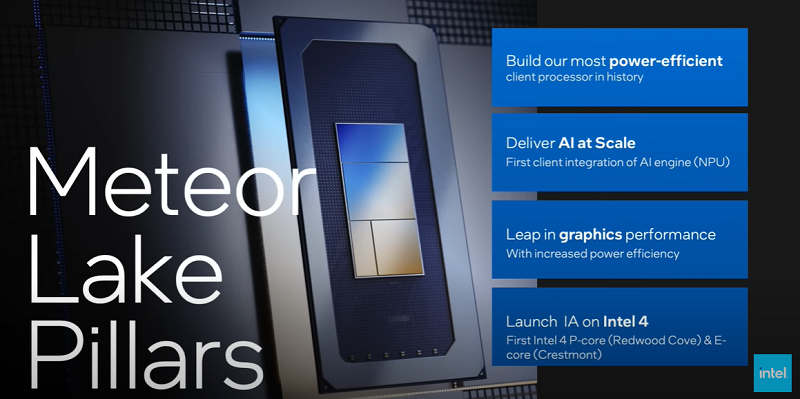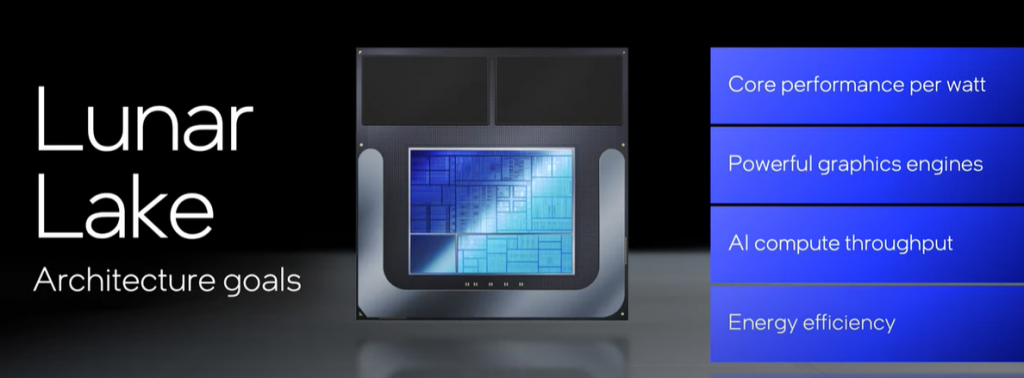Intel’s journey through CPU innovation continues at full speed with its latest chip architectures: Lunar Lake and Meteor Lake. While both represent major leaps in processor design and efficiency, they cater to different use cases and push the boundaries of computing in unique ways. In this post, we’ll compare Lunar Lake and Meteor Lake in terms of performance, underlying technology, target usage, and their early impact on the market.
Meteor Lake: A Modular Shift in CPU Design
Meteor Lake is Intel’s first consumer chip to adopt a tile-based architecture (also known as chiplet design). It uses Foveros 3D packaging to combine multiple “tiles” for different functionalities like CPU, GPU, and IO, each potentially manufactured using different process nodes.

Key highlights:
- Built on Intel 4 process node (EUV lithography)
- First to integrate a dedicated NPU for AI workloads
- Emphasizes power efficiency and hybrid architecture (P-cores and E-cores)
- Aimed at mainstream laptops and ultrabooks
Meteor Lake marks a shift toward modular CPUs that allow for better scalability and integration, especially as AI workloads begin to demand more attention.
Lunar Lake: The Future of Ultra-Efficient Computing
Lunar Lake is Intel’s next-gen CPU platform focused on ultra-low power and AI-first computing, especially for thin and light laptops. While Meteor Lake laid the foundation, Lunar Lake takes things further with a redesigned architecture from the ground up.

Key innovations:
- Built on Intel 18A process node, offering improved transistor performance
- Expected to include next-gen P-cores and E-cores optimized for mobile
- Emphasizes fanless designs, high battery life, and instant-on performance
- Strong AI integration via an upgraded NPU and GPU
Lunar Lake is designed for a new generation of ultraportable PCs, where AI tasks and power efficiency are prioritized over raw multicore performance.
Performance Comparison: Raw Power vs Efficiency
- CPU Cores: Meteor Lake generally has more powerful performance cores suitable for multitasking and productivity. Lunar Lake is tuned for lighter loads with efficiency in mind.
- Graphics: Both include integrated GPUs, but Lunar Lake may bring enhanced Xe graphics aimed at better AI acceleration and visual performance.
- AI and NPU: Lunar Lake is expected to double down on AI performance compared to Meteor Lake, with faster NPUs and software optimization.
- Power Efficiency: Lunar Lake wins here — it’s optimized for devices that value battery life and silent operation, like fanless laptops and tablets.
Usage Scenarios: Which One’s Right for You?
Meteor Lake is best suited for users needing strong all-around performance — think business laptops, creative workflows, and productivity tasks.
Lunar Lake targets those needing lightweight devices for everyday use, enhanced AI experiences (e.g., real-time translation, background blur, smart assistants), and long battery life.
Developers building AI-powered apps or users needing efficient mobile computing will benefit more from Lunar Lake.
Market Impact: Early Signals and OEM Adoption
Meteor Lake-powered laptops started rolling out in late 2023, and major brands like Dell, HP, and Lenovo already ship models using this architecture. These chips have been well-received for their balance of power and battery life.
Lunar Lake is expected to arrive in late 2024 or early 2025, with many OEMs already expressing interest due to its power-efficient design, better thermals, and focus on AI acceleration. Intel is positioning Lunar Lake as the ideal platform for next-gen AI PCs, competing with Qualcomm’s Snapdragon X series and Apple’s M-series chips.
Conclusion: Evolution, Not Just Competition
Intel’s Lunar Lake and Meteor Lake aren’t just about who’s faster — they represent two different directions in the future of computing. Meteor Lake starts the modular journey, while Lunar Lake refines it for a more mobile, AI-centric world. As user needs evolve, Intel seems ready to deliver tailored solutions, whether it’s high-performance multitasking or efficient, AI-enhanced experiences.